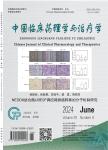应用CoMFA方法和CoMSIA方法研究儿茶酚转甲基酶抑制剂的三维定量构效关系
A 3D-QSAR study of catechol-O-methyltransferase inhibitors using CoMFA and CoMSIA作者机构:Lab of Pharmaceutical Resource Discovery Dalian Institute of Chemical Physics Graduate School of the Chinese Academy of Sciences
出 版 物:《中国临床药理学与治疗学》 (Chinese Journal of Clinical Pharmacology and Therapeutics)
年 卷 期:2007年第12卷第10期
页 面:1172-1172页
核心收录:
学科分类:1007[医学-药学(可授医学、理学学位)] 10[医学]
主 题:CoMFA方法 CoMSIA方法 儿茶酚转甲基酶抑制剂 三维定量构效关系
摘 要:AIM: Inhibitors of catechol-O-methyltransferase (COMT) have always been administered to improve the bioavailability of L-Dopa in the treatment of Parkinson disease (PD). A new three-dimensional quantitative structure-activity relationship (3D-QSAR) analysis is performed to correlate the molecular fields with percent inhibition values. METHODS: Three predictive models were derived based on 36 previously reported COMT inhibitors employing comparative molecular field analysis (CoMFA) and comparative molecular similarity indices analysis (CoMSIA) methodologies. RESULTS: The CoMFA model and CoMSIA model with steric and electrostatic field yielded cross-validated rcv2 0.585 and 0.528 respectively, whereas the conventional rncv2 were 0.979 and 0.891. The CoMSIA model with hydrophobic field exhibited rcv2 0.544 and rncv2 0.930. CONCLUSION: The derived models from CoMFA and CoMSIA all exhibit good prediction for both internal and external validations. The individual inspection of 3D contours generated from these models helps in understanding the possible region for structural modification of molecules to improve the inhibitory bioactivity. The 3D-QSAR models may be useful in designing and predicting novel COMT inhibitors.



